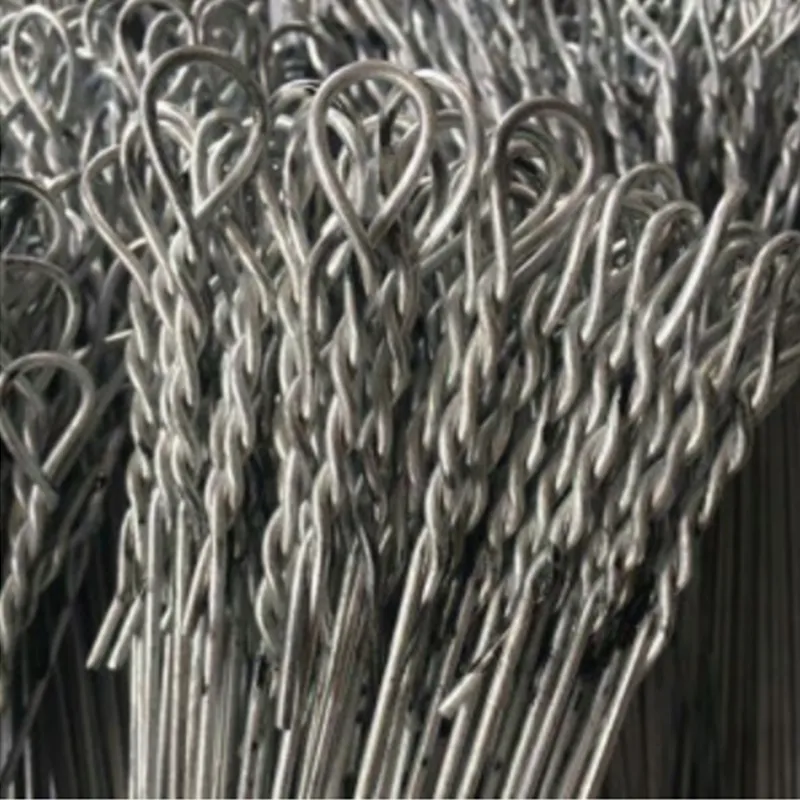-
 Phone:
Phone: -
 Email:
Email:

Applications and Benefits of Rebar Tie Wire in Construction Projects
The Importance of Rebar Tie Wire in Construction
In the realm of construction, safety and structural integrity are paramount. Among the myriad of materials used to ensure that buildings and engineering projects stand the test of time, rebar tie wire plays a crucial yet often overlooked role. Understanding its applications, benefits, and the different types available can enhance the efficiency and safety of any construction project.
What is Rebar Tie Wire?
Rebar tie wire, also known as rebar tying wire, is a specialized wire used to tie together reinforcing bars (rebar) in concrete construction. Rebar itself is a steel bar that provides the necessary tensile strength to concrete structures, which are primarily strong in compression but weak in tension. To ensure that these reinforcing bars remain adequately positioned and do not shift during the pouring of concrete, tie wire is employed.
Typically made from softer steel materials, rebar tie wire is designed to be pliable yet strong enough to hold the rebar in place. Its coating may vary, with options like galvanized or plain finishes depending on the specific demands of the project and the environment in which the structure will be built.
Applications of Rebar Tie Wire
The primary application of rebar tie wire is in the construction of concrete structures such as buildings, bridges, and highways. Here’s how it is typically used
1. Reinforcing Bar Assembly During the installation of rebar, workers use tie wire to hold sections of rebar together, securing them in the desired configuration, which is crucial for achieving the intended strength of the concrete.
2. Maintaining Proper Spacing Tie wires help maintain the correct spacing between rebar pieces. This is essential to ensure that the concrete can adequately flow and encapsulate the bars, maximizing structural integrity.
rebar tie wire

3. Supporting Different Shapes In many design applications, rebar needs to be curved or shaped. Tie wire provides the flexibility to manipulate and hold rebar in various configurations, catering to architectural and engineering specifications.
4. Safety and Stability Properly secured rebar mitigates the risks of accidental shifting or movement during construction, which can lead to structural failures. Therefore, tie wire plays an integral role in maintaining safety on job sites.
Types of Rebar Tie Wire
There are different types of rebar tie wire available in the market, and the choice can significantly impact the efficiency of construction
- Soft Annealed Wire This is the most common type of tie wire. Made from low-carbon steel, it is easy to handle and provides excellent tensile strength. It is preferred for most general-purpose uses.
- Galvanized Wire Galvanization provides a protective coating to the wire, which prevents rust and corrosion, making it ideal for projects in harsh environments or where moisture is a concern. This type of wire can extend the lifespan of the rebar assembly.
- Polymer-Coated Wire This is engineered for specific conditions, offering excellent corrosion resistance. It is commonly used in specialized construction environments where standard materials may not suffice.
Conclusion
In summary, rebar tie wire serves as a fundamental component in the construction industry, facilitating the assembly and stability of concrete-reinforcing structures. Its importance cannot be overstated; by ensuring that rebar remains properly positioned and securely tied together, tie wire contributes significantly to the safety, durability, and longevity of the infrastructure we rely on every day. Selecting the right type of tie wire according to the project needs can lead to enhanced efficiency, cost savings, and ultimately, a stronger end product. As we continue to build the world around us, recognizing the significance of seemingly small components like rebar tie wire is essential for construction professionals aiming for excellence in their work.
-
Wire Mesh for Every Need: A Practical SolutionNewsJul.25,2025
-
Steel Fences: Durable, Secure, and Stylish OptionsNewsJul.25,2025
-
Roll Top Fencing: A Smart Solution for Safety and SecurityNewsJul.25,2025
-
Cattle Farm Fencing Solutions for Maximum SecurityNewsJul.25,2025
-
Affordable Iron Binding Wire SolutionsNewsJul.25,2025
-
Affordable Galvanized Wire SolutionsNewsJul.25,2025
-
Wire Hanger Recycling IdeasNewsJul.25,2025








